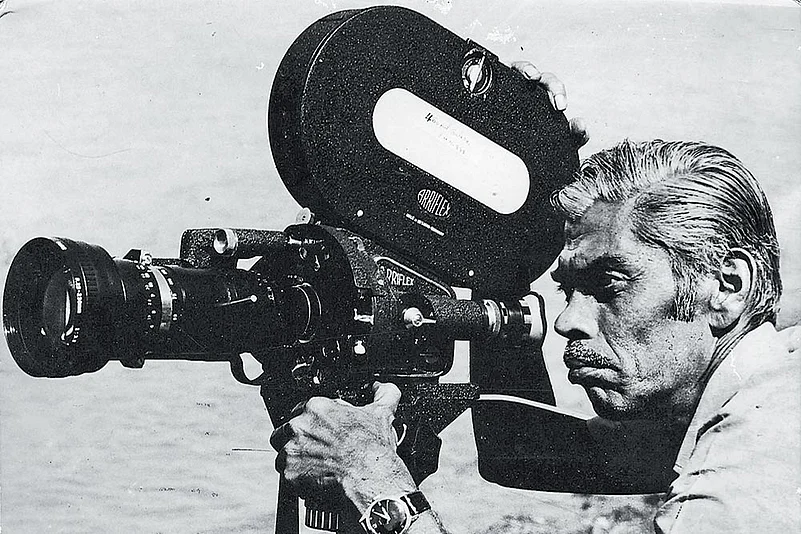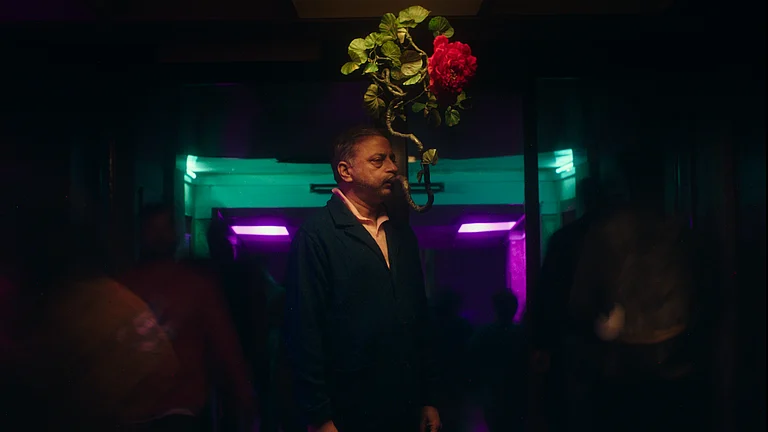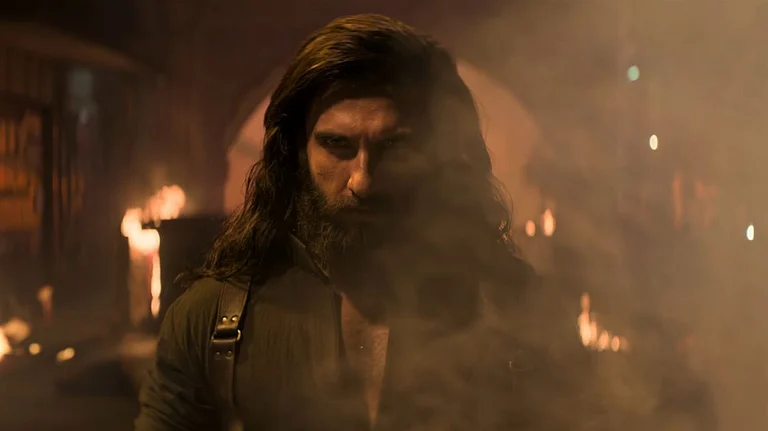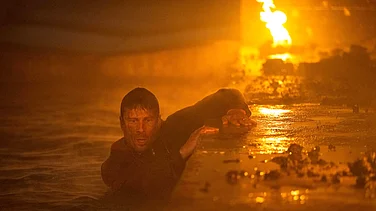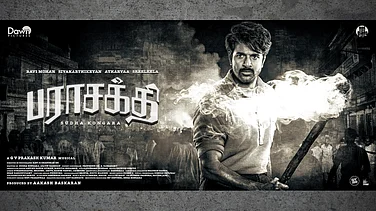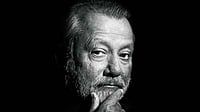Who was the cinematographer who shot Deewaar with that grim, moody and intense tone to match Amitabh Bachchan’s simmering volcano? Who filmed the breathtaking vibrance of Silsila, the poetic intensity of Kabhi Kabhie, and captured the soot and grime of Kaala Patthar? Almost all of Yash Chopra’s most riveting films from Ittefaq to Deewaar to Trishul to Daag credited one man as Director of Photography (DOP): Kay Gee. That’s an odd name. The Internet reveals next to nothing about him. Yash Chopra’s biography contains references to Kay Gee but never wonders what his real name might be. The Yash Raj Films website lists Raju Kaygee, Kay Gee’s son, who is a DOP himself and has been a part of Dilwale Dulhania Le Jaayenge (1995) and Yeh Dillagi (1994), among other films. After knocking on several doors, it was veteran filmmaker Ramesh Talwar who helped me to get in touch with Raju Kaygee. Finally, the name of Yash Chopra’s most prolific cinematographer was revealed: Kamalnath Ganpatrao Korgaonkar, Kay Gee (KG) for short.
Raju graciously agreed to talk about his father’s life and work. Kamalnath was born in Girgaum on June 27, 1924. He was the son of Ganpatrao Korgaonkar, a barrister. Kamalnath was the only son among eight siblings. Sometime in the 1940s, he began working for AMA, a company that used to (and still does) manufacture airfield lighting. This company was making documentaries at the time. They invited filmmakers from across the world to make them. A young Kamalnath got an opportunity to assist documentary filmmakers from Germany, the UK and other countries. He already had a passion for the camera but what furthered this passion was the books that these people left behind for him. The books held a wealth of information about filmmaking, lab processing and handling negatives. Thus began his lifelong affair with learning.
“After AMA, my father joined Kardar Studios. He had also begun to work on some Marathi films,” says Raju. Abdur Rashid Kardar’s studio was well-regarded for its facilities at the time, and soon it became a hub for smaller banners to make it their home. Among them was Baldev Raj Chopra’s B R Films. Kamalnath soon joined B R Films as an assistant to M N Malhotra, the studio’s cameraman. Baldev’s brother Dharam Chopra was also one of the assistants. Kamalnath’s first film as part of the banner was Sadhna (1958), but Kanoon (1960) was the first film in which he was credited as an assistant—billed simply as “Korgaonkar”. While he and Dharam assisted the DOP, Baldev’s youngest brother Yash, worked as the director’s assistant. The assistants got to spend a lot of time together and this was when Kamalnath Korgaonkar developed a strong rapport with Yash Chopra. This turned into a lifelong, intimate partnership that created cinematic classics.
On the first two films that Yash Chopra directed for his brother, Kamalnath continued to be an assistant. In the seminal Waqt (1965), which laid down the template for all lost-and-found films thereafter, “K G Koregaonkar” was listed as the Operative Cameraman, which meant lugging around the heavy-duty Mitchell cameras. Kamalnath had a sense of lighting, which was almost uncanny. “He never used a light meter,” Raju explained, “When Yash ji travelled abroad, he bought a light meter for my father as a gift. He would study these meters for a few days and then hand them over to his assistants. He didn’t need a meter. He had his palms.” All Kamalnath used to do was hold his palm under the sun. The palm reflects sunlight, while the back of the hand absorbs it. This was enough for him to gauge lighting and contrast. Both M N Malhotra and B R Chopra admired him for his ingenuity.
“My father Kay Gee rarely agreed to work outside... Yash Chopra and he had great ‘tuning’. He couldn’t get it anywhere else.”
The first film that made him “Kay Gee” was Ittefaq (1969), Yash Chopra’s final directorial venture at B R Films. It was the young Ravi Chopra, B R’s son and one of the ADs on Ittefaq, who suggested the name. Kamalnath Ganpatrao Korgaonkar was too long a name to fit on the screen. K G, his initials, would have been short and sweet but juvenile. And so they ended up with “Kay Gee”, which became so intrinsic to his work and goodwill that his son, while joining his father’s vocation, adopted Kaygee as his last name instead of Korgaonkar, the family name.
Post Ittefaq, Yash Chopra wanted to go out there and do his own thing. He approached both Dharam Chopra and Kay Gee to join him as the resident cinematographer of his new outfit, Yash Raj Productions. While Dharam turned him down, Kay Gee gladly accepted. That day, B R Chopra called him to his cabin. “He told my father, ‘I’m really happy that you are with Yash. You guys are doing a great job. Mujhe maloom hai ke tum usko sambhaal loge (I know you will take care of him),’” explained Raju. Thus began the great rumble. From this point on, Kay Gee was a fixture in all Yash Raj films directed by Yash Chopra himself.
Deewaar had a dark, sombre texture congruent with its theme. Raju says, “Those days our DOPs used to work in stark contrasts. But today nobody takes the risk. Everyone needs to look good. Everything needs to glitter.”
While Deewaar was incessantly dark, Trishul had accented reds and Kaala Patthar had the grungy feel of a colliery. But Silsila, even by today’s standards, had a vibrant exterior with a rich tapestry of colours. “When my father wanted something, Yash ji never said no,” says Raju. “Once they were at this world-renowned photography exhibition in Germany called Photokina. They saw the latest Arri camera and both of them liked it. My father said, ‘Let’s take it.’ Yash Chopra booked it on the spot. It wasn’t so easy to make international payments back then. Yash ji called his accountant in Bombay and arranged all the documentation. The camera cost 7.5 lakh rupees!”
This camera, Arriflex35 III, was used to shoot Silsila. It was also later used in Hollywood to shoot Back to the Future II and III, James Cameron’s The Terminator (1984) and Aliens (1986). It was also used as recently as in Furious 7 (2015). The dupe negative for Silsila was processed at Prasad Labs, which was in Chennai (then called Madras). The owner, L V Prasad, was so enamoured by the quality of photography in the film that he requested for an exclusive preview screening only for the Chennai DOPs. Prasad even wanted Kay Gee to settle down in Chennai and work there. But Kay Gee was steadfast in his commitment to Yash Chopra. “Shashi Kapoor and Amitabh Bachchan once visited my father and tried to convince him to work for other banners as well. He stood to earn a lot more if he did. But he rarely agreed to work outside. He once started work on Manmohan Desai’s Naseeb, but left it after a few days. He and Yash Chopra had great ‘tuning’. He couldn’t get it anywhere else.”
Kay Gee also directed a Marathi film called Mahananda (1985), an adaptation of Jaywant Delvi’s book of the same name, which focused on the subject of Devdasis. Around the same time, Yash Chopra announced a film called Mashaal. It was based on a play called Ashroonchi Zhali Phoole, which was earlier made into a film called Aansoo Ban Gaye Phool (1969). The subject didn’t go well with Kay Gee. It didn’t sound like a Yash Chopra film, he thought, but he still began work on it. It was while working on Mashaal that Kay Gee passed away of a heart attack. He had his work boots on.
Many years later, Raju was approached by an elderly hairdresser. She was past her prime, but her eyes lit up at the mention of Raju’s last name. “I worked with your father,” she said to Raju, “Let me tell you something about him.” Apparently, Sadhana, the superstar of yesteryear, refused to allow close-ups unless Kay Gee had done the lighting for her mid and close-up shots.
MORE FROM THIS ISSUE
Raju also remembers running into Rakhee ji on a film set. “She said, ‘Kay Gee was a wonderful man’, and started crying. Shooting was held up for some time.”
(This appeared in the print as 'The Man Who Shot Deewar')







